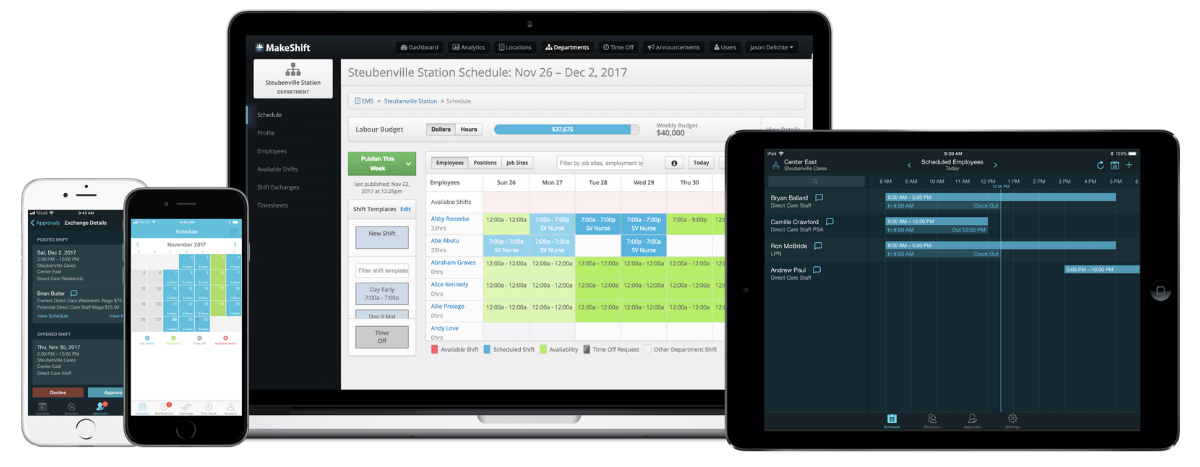“Caring for our seniors is perhaps the greatest responsibility we have. Those who walked before us have given so much and made possible the life we all enjoy.” – Senator John Hoeven
Your nursing home is privileged to care for its residents and offer personalized, quality care.
Today’s nursing homes are changing their culture by ditching the “hospital feel” in favor of a more comfy atmosphere, engaging activities, and people-focused staff support.
Ready to shake things up in your nursing home facility? Today, we’re giving you 9 strategies to elevate your overall culture. It’ll make for happier residents and more fulfilled staff members.
- The Evolution of the Nursing Home
- 9 Areas Impacting Nursing Home Culture and How to Improve Them
- MakeShift Can Help Improve Your Nursing Home Culture
The Evolution of the Nursing Home
Rest homes were established in the 19th and 20th centuries — their purpose was to care for the “worthy poor.” Those left without family or means to care for themselves.
These homes weren’t associated with hospitals. They were small, home-like residences that offered a comfy place for residents to call home.
Over time, it was evident some residents needed medical care.
So, rest homes evolved, became associated with hospitals, and were run by the government.
An unfortunate result of the transition was that these facilities became less homey and more institutionalized. They offered less personalized care and a more sterile medical atmosphere.
Today’s nursing homes are coming full circle by focusing on a more home-like environment to replace pale green walls, bad fluorescent lighting, and a hospital-like vibe.
For nursing home residents to thrive, we must continue the culture change. Especially with the growing aging population.
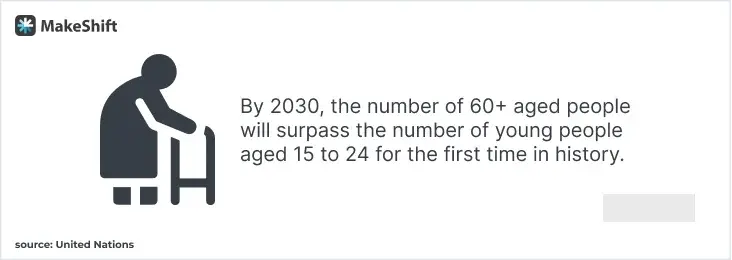
- The global population of 60 and older has more than doubled since 1980 and is projected to reach 2.1 billion by 2050.
- By 2030, the number of people aged 60+ will surpass the number of young people aged 15 to 24 for the first time in history.
- This aging trend is dramatically higher in developed countries, where the proportion of people aged 60 and over is projected to hit almost 40% by 2050.
What can you do to improve your nursing home facility? Prioritize upgrading your culture.
9 Areas Impacting Nursing Home Culture and How to Improve Them
Before you can improve your nursing home culture, you must grasp the areas that impact your culture. Use the areas below as a guide to look at your facility and implement needed changes.
Wondering if your culture matters?
It matters.
Nursing homes that invested in the culture change process report significant improvement in staff retention.
Their annual turnover rates ranged from 65% to 100% before revamping their culture. After a culture upgrade, turnover rates dropped to 30%.
1. Make People Your Focus
First things first, shine the spotlight on person-centered care in your organization by:
- Incorporating residents' preferences into daily care routines.
- Provide choices in meals, activities, and daily schedules based on your residents’ preferences.
- Encourage your staff to view residents as unique individuals with distinct needs and preferences.
- Invite residents to actively participate in care planning meetings.
- Create resident councils where they can voice concerns and suggest improvements. (The key to success here is actually to USE their suggestions)
- Provide staff training on embracing shared decision-making and collaborative care planning.
2. Train Your Staff on Empathy
Let your staff know you care by taking them under your wing. Offer training and development to help them learn more about creating connections.
Instead of a pile of woo-woo talk about feelings and sensitivity, give them actionable steps to learn how to show empathy.
This aligns with creating a culture change in your nursing home AND boosting your staff’s job satisfaction.
Try out these ideas for training programs focused on empathy, communication, and person-centered care:
- Conduct workshops on active listening and effective communication techniques.
- Provide empathy training that helps staff understand and identify with residents' perspectives.
- Introduce ongoing training modules on the principles and practices of person-centered care.
3. Emphasize Communication and Collaboration
Foster a culture of teamwork. Emphasize open communication and collaboration among your staff, residents, and families.
When you prioritize this, you’ll improve staff retention rates and your overall culture.
Check out these options for bolstering communication:
- Establish regular communication channels like monthly newsletters, bulletin boards, or a staff chat platform.
- Create a survey for staff, residents, and families to share feedback and suggestions. (SurveyMonkey has an excellent free option)
- Implement regular team-building activities to foster a sense of collaboration among staff.
- Hold regular care conferences that involve residents, families, and relevant staff.
- Use tech, like communication apps, for real-time updates and coordination.
4. Make Dignity and Respect Your Mantra
There isn’t a person on the planet who doesn’t appreciate being treated with dignity and respect. That goes double for your staff, residents, and their families.
It can be easy to forget this when you’ve got belligerent residents or elderly residents whose bodies don’t function like they once did.
The ongoing nursing home staff shortage can also take a toll on your employees, affecting their level of empathy.
Prioritize fostering a culture of respect for residents' dignity by:
- Incorporating dignity-oriented language in care plans and documentation.
- Training staff on cultural sensitivity to respect diverse backgrounds and beliefs.
- Implementing a zero-tolerance policy for disrespectful behavior, with clear consequences.
- Addressing residents by their preferred names and titles.
- Knocking before entering residents' rooms to respect their privacy.
- Offering choices and seeking consent before providing care.
5. Create a More “Homey” Environment
It’s no shocker to think most residents would be more comfortable in a facility that felt more like home.
Wouldn’t you?
Depending on your budget, there are plenty of options for reducing the clinical feel of your facility:
- Redesign communal spaces to resemble a home rather than an institution.
- Allow residents to personalize their living spaces with familiar items or a fresh coat of paint in their favorite color.
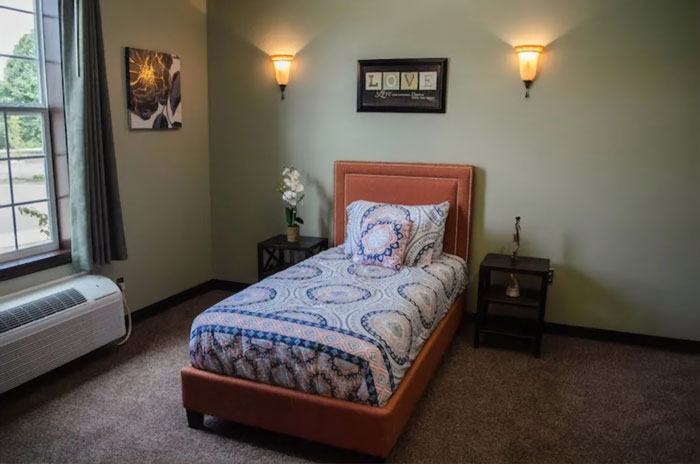
Photo Credit: Lantern
- Introduce communal kitchens or dining areas to promote a sense of family and community.
- Create cozy corners with comfortable furniture and soft lighting.
- Incorporate artwork, photos, and decorations chosen by residents.
- Build gardens or outdoor spaces for residents to enjoy.

Photo Credit: Lantern
6. Get Residents Active and Engaged
Keeping your residents active and engaged will make them happier and improve your nursing home’s culture — it can positively impact their health.
One study found that residents with high social engagement had an 18% lower 5-year mortality risk and a 3-year increase in overall survival.

Put a few of these ideas into practice to boost your residents' well-being:
- Implement a variety of activities that cater to different interests and abilities.
- Painting/drawing
- Chair yoga
- Cooking
- Creative writing
- Board games
- Incorporate reminiscence therapy to engage residents in meaningful conversations. This is a type of psychotherapy that involves recalling past pleasant memories.
- Encourage intergenerational activities with local schools or community groups.
7. Promote Cultural Competence
Cultural competency means being aware of your own cultural beliefs and values and how these may be different from other cultures. Understanding cultural differences can make or break your nursing home’s reputation and culture.
Help your staff’s cultural competency by:
- Implementing diversity and inclusion training to increase awareness of cultural differences.
- Incentivizing staff to attend cultural competency workshops or seminars.
- Establishing a cultural competence committee to address specific cultural needs within the facility.
- Offer language training to help staff communicate with residents from diverse linguistic backgrounds.
- Use cross-cultural simulation exercises to enhance empathy and understanding.
8. Gather Feedback For Quality Improvement
After implementing some of the changes above, gather feedback to gauge the impact.
Remember, feedback is critical to know what’s really going on in your nursing home. Use feedback data to identify areas for improvement.
Here are 5 ideas for collecting feedback:
- Send monthly surveys for residents, families, and staff to provide feedback.
- Establish a feedback review committee to analyze and act upon received feedback.
- Place anonymous suggestion boxes in common areas.
- Host quarterly town hall meetings to address concerns and share updates.
- Create a user-friendly online platform for submitting feedback.
9. Use People-Centered Tech To Support Staff
We’ve addressed options for making your residents feel more at home. Next, we must address your staff.
Commit to shifting towards a people-centered approach that prioritizes staff well-being and empowerment.
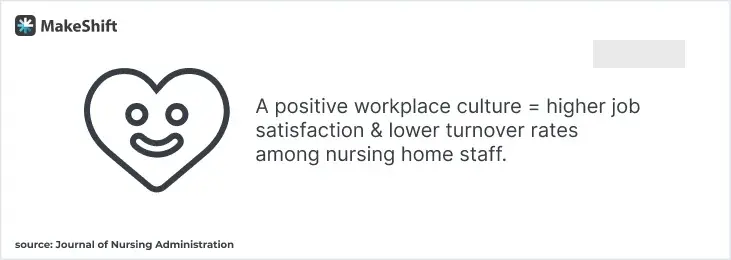
A study published in the Journal of Nursing Administration found that a positive workplace culture was associated with higher job satisfaction and lower turnover rates among nursing home staff.
Implement technology to streamline work processes. Scheduling software, electronic health records, and telemedicine tools, for example, can help optimize the workflow and ease your staff’s workload.
Today, tech can be used to handle many tasks:
- Administrative tasks
- Manage patient medical records
- Track medications & treatments
- Facilitate communication among healthcare providers & residents’ families
- Care planning tools
- Intuitive staff scheduling
Better staff scheduling contributes to a positive and supportive work environment
Use staff scheduling software to streamline the scheduling process to reduce administrative burden on staff, allowing them to focus on resident care.
More people-centric scheduling creates a more positive and harmonious work environment in 3 ways:
- Enhances work-life balance by accommodating staff preferences, allowing for flexibility in scheduling.
- Reduces burnout and fatigue by optimizing work schedules and preventing overworking staff.
- Improves staff morale and job satisfaction through transparent and fair scheduling practices. This fosters a sense of appreciation and trust within the team.
How MakeShift Can Help Improve Your Nursing Home Culture
MakeShift was developed to fix the broken staff scheduling system in the healthcare industry.
Many nursing home employees, particularly nurses, are scheduled on rotations, and shift callouts are heavily used to bring in more staff in times of need.
Ease the burden of your staff scheduling by ditching manual scheduling — schedule smarter and more efficiently with MakeShift.
View and manage schedules on the go
Your staff can access their schedules, set availability, and submit requests on their phone. You can manage scheduling and approve requests while on the go. Mobile accessibility makes scheduling more interactive and lifestyle-friendly.
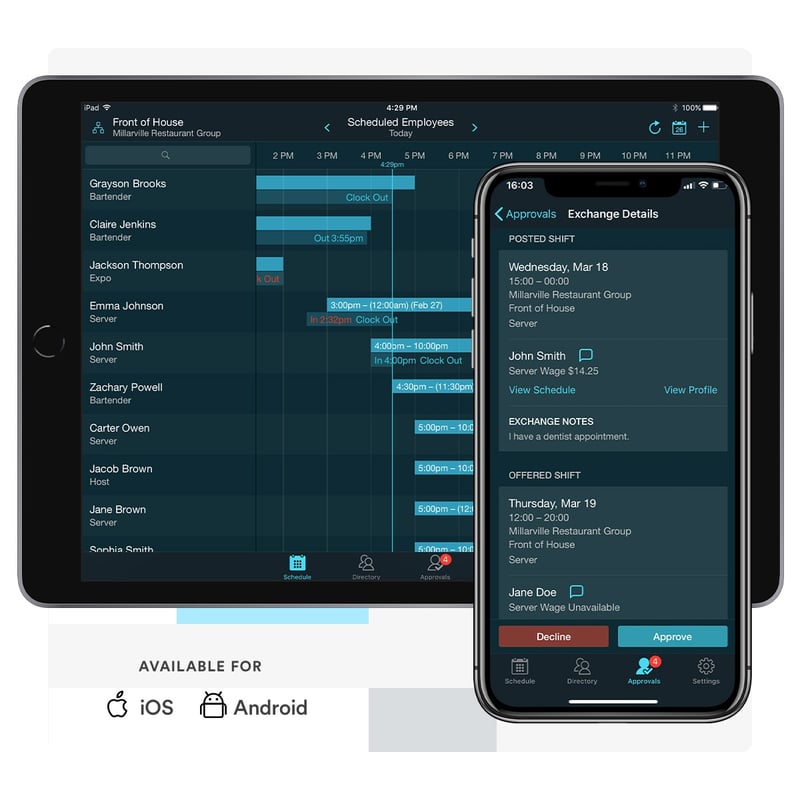
Rotation-based scheduling
Easily create a rotating shift schedule to distribute the workload evenly. This helps alleviate staff burnout and fatigue and ensures that on-the-clock staff are mentally fresh. Renewed and recovered staff can offer more empathy when caring for your residents.
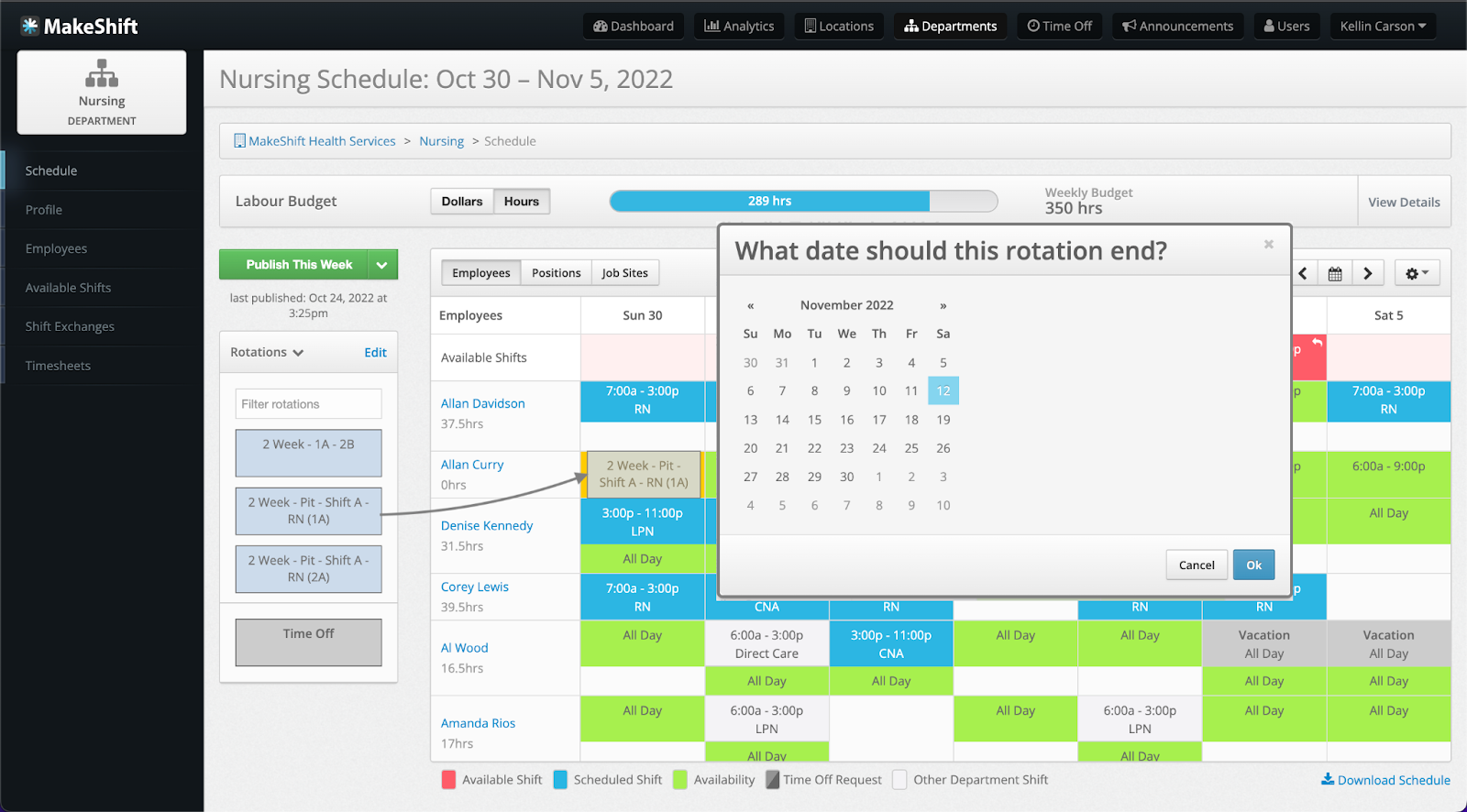
Compliance
There’s a lot going on in nursing home facilities, and it can be tough to stay compliant through manual monitoring. Ensure compliance with labor laws and regulations with overtime rules and automatic fatigue alerts.
Plus, MakeShift is a HIPAA-compliant software.
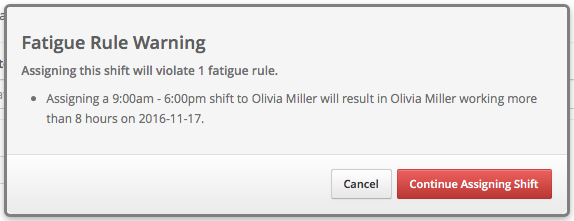
Improve staff communication
MakeShift provides a centralized platform for staff communication, which can help reduce scheduling conflicts and improve staff engagement.
With features like shift swapping and availability tracking, MakeShift empowers your nursing home staff to work together to fill staffing gaps and ensure everyone's needs are met.
AI-powered scheduling platform
MakeShift’s ShiftMate AI scheduling platform offers brand new features to the staff scheduling world, like:
- Real-time assistance
- Automated scheduling
- Future forecasting
- Employee well-being monitoring
- Effortless scheduling requests

Streamline scheduling processes
MakeShift Scheduling automates many time-consuming tasks associated with scheduling, such as shift creation, employee availability, time-off requests, and schedule distribution.
This saves time and reduces the administrative burden of scheduling.
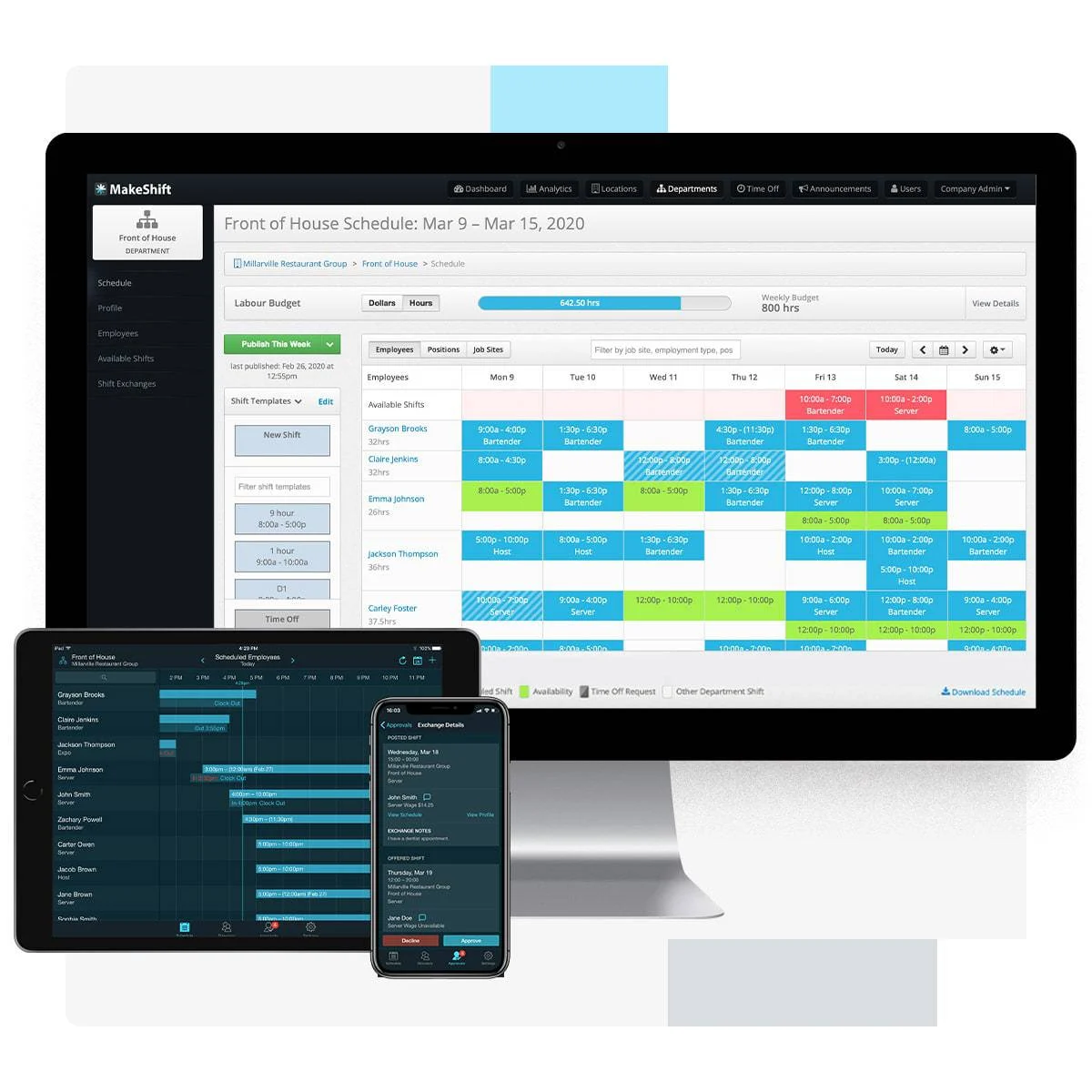
A Little Creativity Can Change Your Nursing Home Culture
Today’s nursing homes need a revamp. With a bit of creativity, you can upgrade your nursing home’s culture to benefit your staff, residents, their families, and your operation.
The days of impersonal clinical settings are over.
Commit to making your facility more comfortable and engaging for your residents.
Commit to making your staff’s work environment supportive and harmonious.
Ready to see what MakeShift can do for your staff scheduling? We’re itching to show you. Schedule a free demo today.




